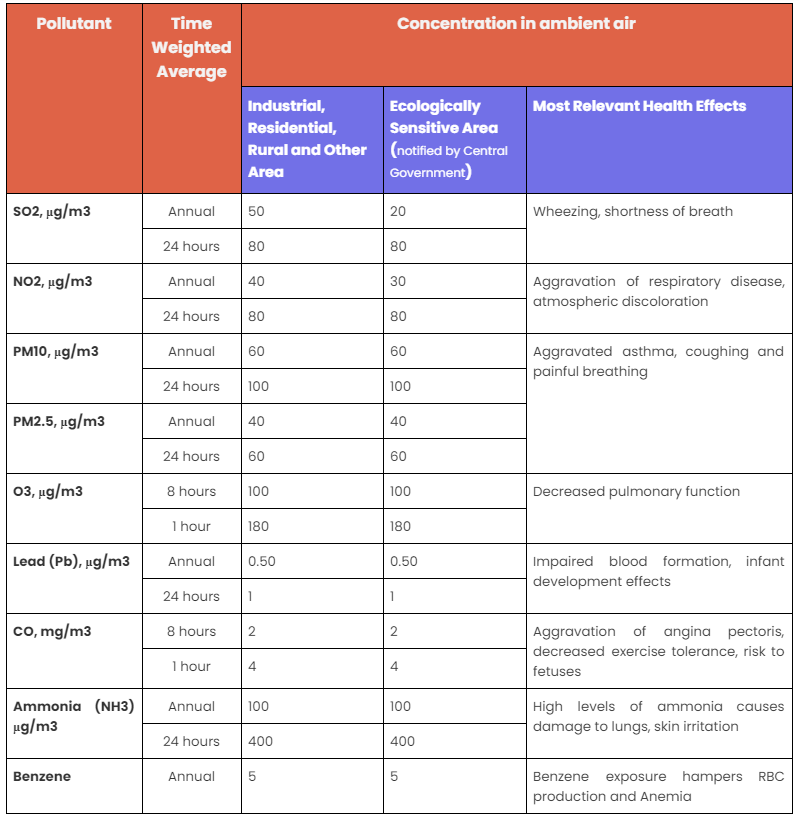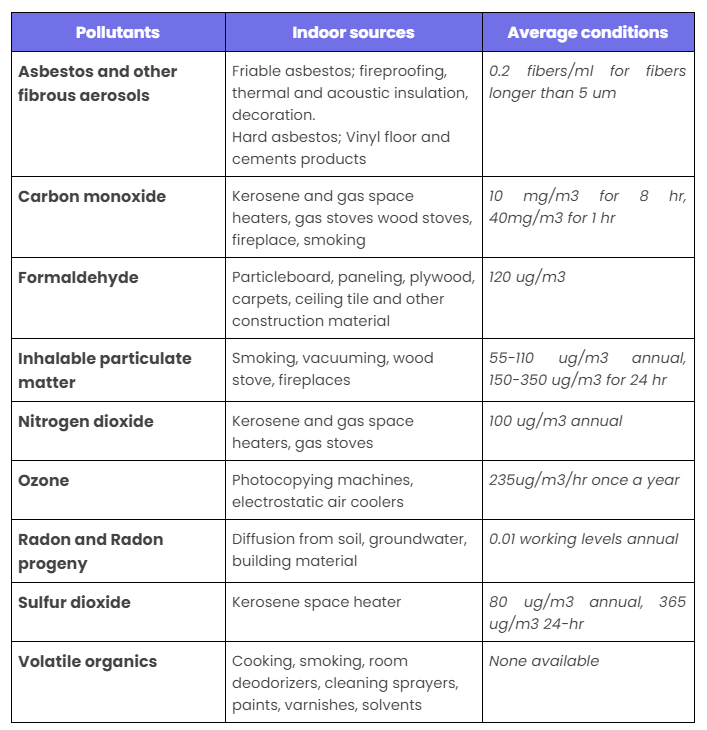3: Air Quality Standards
Air quality is an concern not only in the outdoor environment but indoors as well. Let's see in depth what these air pollutants are.
Air pollution has become a global concern. It is an undeniable fact that all living beings need air to survive. But, unlike water we cannot verify the purity of air before we breath. Thus, it has become a necessity to monitor the quality of air by assessing the concentrations of different air pollutants in the atmosphere. This will not only help to control and mitigate the pollution, but also helps to strategize and prevent the air pollution.
Air Quality Standards- It defines the maximum amount of a pollutant that can stay in the outdoor atmosphere for a period of time without causing harm to public health.
In the late 20th century, countries across the world started to understand the grave consequences of air pollution in case of improper management. Thus, the Indian government formulated the Air (Prevention and Control of Pollution) Act in 1981. Under this act, the Central Pollution Control Board (CPCB) of India established national ambient air quality standards in 1982, which were then tested and used to inform government planning efforts.
The air quality standards in India have been revised several times, the currently used standards were set in 2009.
The regulating bodies involved are Central Pollution Control Board, Ministry of Environment and Forest(MoEF) and Bureau of Indian Standards.
The standards have been set for two different zones-
1. Ecologically sensitive areas(ESZ)- These are the areas around national parks, sanctuaries, forests and other protected areas which are important for maintaining ecological diversity and balance on the planet. These zones are declared by the government and the pollutant concentration standard is generally low in these areas.
2. Industrial, residential, rural and other areas- These are generally human habited areas. And thus the standards are set to levels which don't cause damage to humans and the environment.
List of pollutants and its optimal concentrations in the atmosphere according to National Ambient Air Quality Standards, 2009 is given in the figure below.

On the other hand, Air Quality Index also known as AQI is a colour coded index for air quality, measured on a daily basis. The colours used include green, yellow, orange, red, purple and maroon ranging between 0- 500, where ‘0’ symbolises good air quality and ‘500’ indicates bad air quality It is majorly based on the concentration of 8 pollutants in the atmosphere- PM10, PM2.5, nitrogen dioxide (NO2), sulphur dioxide (SO2), carbon monoxide (CO), ozone (O3), ammonia (NH3), and lead (Pb). The air quality index will help the public to understand the level of air pollution in the atmosphere and take necessary precautions according to the condition of air.

Indoor Air Quality : Impact on health
It is said that ‘home is the safest place that one can find on the planet’. But, is it really safe? Air pollution is not only limited to the outdoors, but is also found to be existent indoors. This is referred to as ‘indoor air pollution’.
Indoor air pollution- It can be defined as the pollution of air inside houses or any other enclosed buildings due to the indoor activities (cooking, cleaning etc.) or products (furniture, plants etc.).
In other words, if the indoor air quality is bad, then it will lead to indoor air pollution. The indoor air quality can deteriorate due to various indoor pollutants from different sources. For example, combustion inside houses/ buildings to cook and heat can elevate the levels of Carbon monoxide, Nitrogen oxide, Hydrocarbons and other respirable particulates. Cigarette smoke emits Carbon monoxide, Benzene, Acrolein and other aldehydes.

Some of the pollutants specific to indoors environment are mentioned in the table below:

The use of inefficient and polluting fuels and technologies at homes contributes to indoor air pollution, which can damage the lungs and enter the bloodstream. The levels of fine particles in indoor smoke is 100 times above tolerable levels in poorly ventilated dwellings. Women, children and old age people who spend the most time indoors, are at increased risk for exposure.
Measures to improve indoor air quality:
- Maintain cleanliness and dust your house regularly.
- Keep plants (exception- air purifying plants like Chrysanthemum) outside as it may increase the pollen concentration in the indoor air.
- Improve the ventilation by allowing the passage of more air into the room.
- Choose safer and non- toxic products (cleaners, paints etc.)
- Dehumidify your house regularly as moisture allows fungal mould and bacterial growth.
- Invest in efficient air purifiers. Keep the kitchen vents on during cooking.
Did you know?
Every year 3.2 million premature deaths happen from the illness due to poor indoor air quality due to various reasons such as incomplete combustion of solid fuels and kerosene used for cooking(WHO). Particulate matter and other pollutants in household air pollution irritate the lungs and airways, weaken the immune system, and decrease the blood's ability to carry oxygen[6].